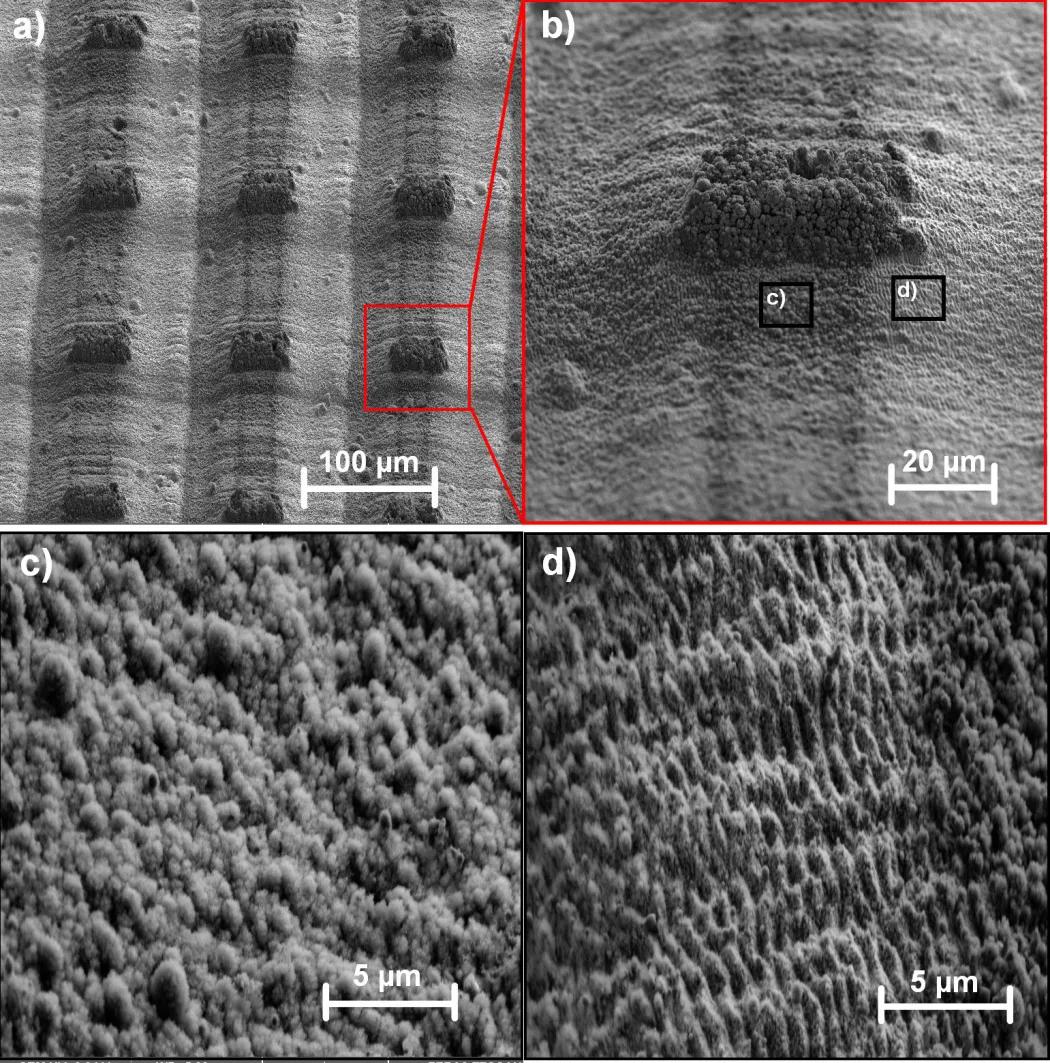The metallic surfaces with high repellence towards water molecules are extremely desirable due to many protentional applications in science and industry including anti-icing, self-cleaning and anti-corrosive surfaces. Inspired by the nature, lamellar and lotus leaf papillae like structures covered with nanoscale protrusions were fabricated by picosecond laser PERLA, developed at HiLASE, processing on AL7075. Surface topography depends on the laser fluence and spatial shifts of laser scans. The fresh laser processed hydrophilic surface was vacuum processed to create layer of hydrocarbon to reduce the surface free energy for the wetting property transformation. The analysis of the results shows the synergistic effect of hierarchical structures and dominant presence of non-polar elements is critical for superhydrophobic property. The surface geometry is primarily responsible for the wetting property transformation by entrapping μ-volume of air to generate a composite interface of solid-gas-liquid. Micro and nanoscale (dual scale) surface structures are essential for the durable and consistent superhydrophobic property with high degree of water repellence for bigger volume of water droplets.
Contact: Petr Hauschwitz
